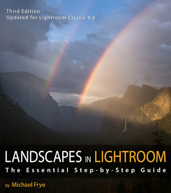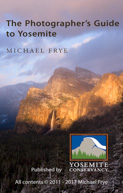Vision and Creativity
by Michael Frye | Jan 25, 2015 | Light and Weather, Vision and Creativity
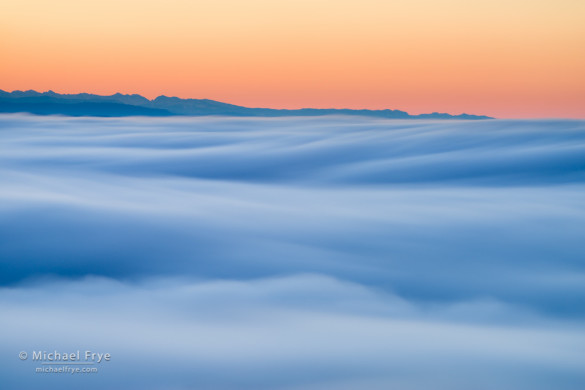
Fog and southern Sierra peaks from Mt. Bullion at sunrise, Mariposa County, Wednesday morning
After the episode of dense fog in the Central Valley that I mentioned in my last post, the fog lifted into what meteorologists call a stratus deck last week – essentially a layer of fog that’s slightly above ground level. From the Central Valley the stratus deck would look like a low overcast. If you were to drive out of the valley into the Sierra, you’d climb into the clouds, and into a layer of fog, and then eventually get above the fog and into sunshine. And if you could find a hill or ridge that rose above the stratus deck, you’d be able to look out over a sea of fog.
That sight should be familiar to people who live in the San Francisco Bay Area, or anywhere along the California Coast. When I lived in the Bay Area in the early ’80s, I remember driving along Skyline Drive on the Peninsula and looking out to the west over a sea of fog covering the ocean. At that time my interest in photography was in its infancy, but it was a beautiful sight. I’ve had that mental image in my mind ever since, and have long wanted to make photographs from above a sea of fog.
(more…)
by Michael Frye | Jan 22, 2015 | Vision and Creativity
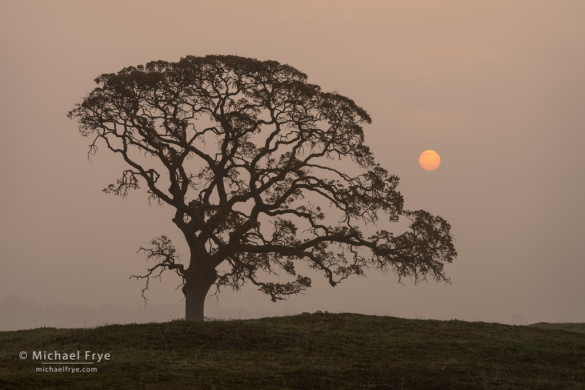
Oak, sun, and fog, Sierra Nevada foothills
As regular readers know, I love fog. It’s a little like snow in the way it can transform an ordinary landscape into something dreamlike.
We’ve had a lot of interesting fog around here lately. Last week the fog was very dense in the Central Valley, sometimes persisting all day rather than burning off in the afternoon. One morning we made an early trip into the lower foothills of Mariposa County, an area with rolling, grassy hills and scattered oaks (I’ve posted images from there before). I was hoping that the fog would be thick enough to push up from the Central Valley into these foothills, and it was – just barely. We were right on the edge of the fog, which was actually perfect – foggy enough to create a misty, ethereal mood, but not so foggy that it completely obscured the landscape.
(more…)
by Michael Frye | Jan 11, 2015 | Composition, Vision and Creativity
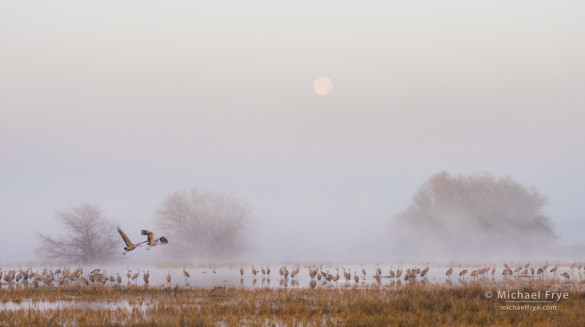
Sandhill cranes, fog, and the setting moon, San Joaquin Valley, CA
Although I specialize in photographing landscapes these days, I also enjoy photographing the masses of migrating birds that spend the winter in California’s Central Valley. And while I won’t pass up an opportunity to capture a close-up wildlife portrait, most of the time I’m trying to include some of the animals’ habitat. I’m really attempting to photograph landscapes with birds in them, and, as with other landscapes, use the light, weather, and moment to convey a mood.
Last Tuesday morning Claudia and I made another trip down to one of the wildlife refuges in the Central Valley. As usual, I hoped for fog, but knew that if the fog didn’t materialize there would be a nearly-full moon setting to the west, which also might help to add some mood to the photographs.
As it turned out, we got both. We found some low-lying mist, but it wasn’t thick enough to obscure the moon. I just needed some birds to add to the mix, and fortunately we found a flock of sandhill cranes roosting in a pond with the moon behind them.
(more…)
by Michael Frye | Jan 8, 2015 | Vision and Creativity
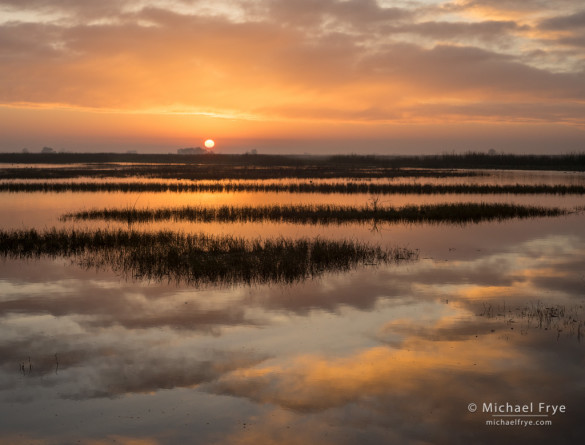
Sunrise in a San Joaquin Valley marsh, California, December 18th
I’m grateful to live near Yosemite Valley, one of the world’s most spectacular landscapes. But in photography, light is more important than subject. My most popular image of 2014 featured an orchard in the Sacramento Valley – with exceptional light. I’d rather photograph an “ordinary” scene in great light than an extraordinary scene in dull light.
Last month Claudia and made an early-morning drive to one of the wildlife refuges in the flat-as-a-table-top expanse of the San Joaquin Valley. I was hoping for fog, which is common on winter mornings in the Central Valley. Instead, I found the beautiful clouds and reflections shown in the photograph above. In this case, the flat landscape helped, making it possible to catch the orange ball of the sun just as it crested the horizon. The light, clouds, colors, and reflections helped to convey a nice early-day mood.
(more…)
by Michael Frye | Dec 11, 2014 | Announcements, Composition, Vision and Creativity
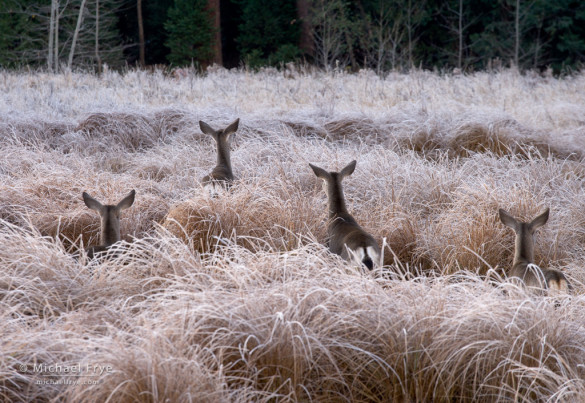
Curious deer, Yosemite
We all know that music has rhythm. Speech has rhythm too: the cadence of words, phrases, sentences, and paragraphs gives language its order and structure, and makes it easier to understand.
We don’t usually think of photographs as having rhythm, but they do – or, at least, good ones do. Most effective photographs have some kind of repetition, a pattern that helps give the image cohesion and rhythm.
The tenth issue of Photograph digital magazine just came out, and it includes an article of mine called “Finding Rhythm.” I’ve been thinking a lot about visual rhythm lately, so I was happy to have this opportunity to write about it for the magazine.
(more…)
by Michael Frye | Nov 21, 2014 | Composition, Vision and Creativity
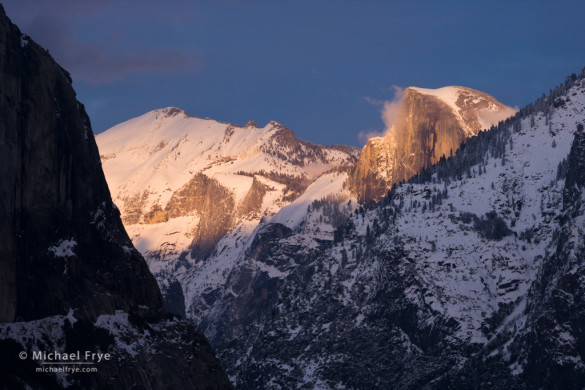
Half Dome at sunset from Tunnel View, Yosemite. The dramatic light might grab your attention here, but the interlocking diagonal lines create a cohesive design and a sense of energy.
One of the keys to learning composition is to think abstractly. As Ian Plant says in his excellent ebook about composition, Visual Flow, “Learning to think abstractly about visual elements is the single most important thing you can do to improve your compositional skills.” The less you think about the subject, and the more you think about the underlying abstract design – the lines, shapes, and patterns – the better your compositions will be.
It’s often easier to think abstractly when photographing a small subject, like a pattern of leaves, or a series of cracks in ice. But it’s just as important to look for repeating lines and shapes in big, sweeping landscapes. One of the most common – and powerful – designs in these big scenes is a series of interlocking diagonal lines. Most hilly or mountainous areas have an abundance of diagonals, and diagonal lines give a photograph a sense of dynamic energy and motion – a perfect fit for dramatic landscape images.
(more…)













